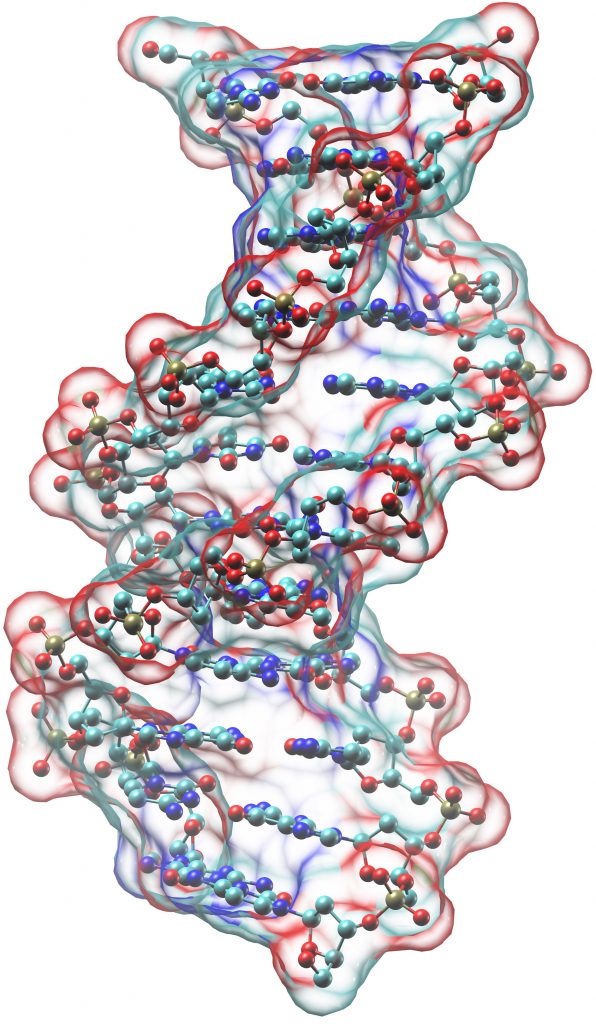
In the four billion years of life on Earth, there must have been countless evolutionary processes. Nevertheless, it is believed that our genetic information has been handed down continuously from the origin of life to us through a common storage medium. That storage medium is DNA (deoxyribonucleic acid). Without a single exception, all living things on this planet today record their genetic information in an organic compound/biopolymer called DNA, which forms the famous right-handed double helix, using the four letters ATGC. From a chemical point of view, there are two possible structures of DNA, one winding to the right and the other winding to the left (these are called mirror images because of their mirror relationship), but no organism has yet been found that uses the mirror image on the left-hand side. This is one of the reasons for the hypothesis that all life on earth can be traced back to a common ancestor.
The structure of DNA, which has been working unchanged for such a long time, has been extremely optimized in order to pass on genetic information to the next generation. The right-handed double helix structure mentioned above is one such example. In addition to this, by using only the basic rule of “T opposite A and C opposite G” (called complementary basepairing), our life has been able to copy genetic information through an astronomical number of times. This is evidence of the superiority of these features.
In our laboratory, we treat DNA as an “organic compound/biopolymer” just like the chemicals we are familiar with, and aim to make the most of its advantageous features, which have been proven by the four billion years of life, in materials chemistry. We will also develop molecular devices, molecular machines, and molecular robots that will lead the way to the future through the study of the three main “molecular technology” listed below.
Media Coverages (in English)
| 2021 | NHK World “Science View” |
| 2018 | The MRC London Institute of Medical Sciences “Biomedical Picture of the Day” |
| 2018 | RSC “Chemistry World” |
| for domestic ones, see here |